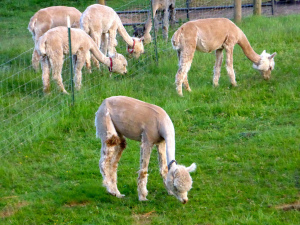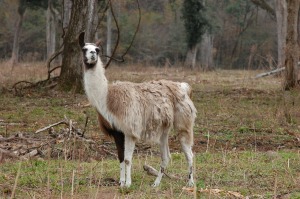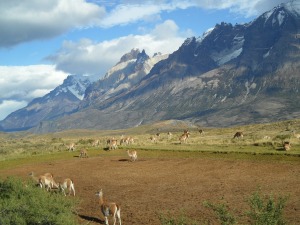

Tips for Starting an Alpaca Farm

This year the weather has been unusually cold and for many farmers it has become a major concern. If you own a farm and have kept your animals healthy all year round and provided added care, food, and shelter for your animals to reduce winter stress, they should do just fine during the winter. This article is about starting an alpaca farm, so if you don’t own a farm and are thinking about starting your own alpaca farm, this post is for you. If you already own a farm and haven’t got any alpacas yet on your farm, these tips should definitely help you to get your alpaca farm started and get connected with other alpaca farmers in your area, so please keep reading.
What are alpacas
First, for those who haven’t been around an alpaca yet, I’d like to describe the animal for you. Alpacas are domesticated South American species of animal that closely resembles a miniature form of camel or llama in appearance and belonging to the biological family of Camelidae. A full grown alpaca can weigh about 100 to 185 pounds and are 2.5 to 5 feet tall, which makes them slightly smaller than a llama.
Alpacas are truly unique animals in many ways. Even though they originated from the South American continent, and they usually graze in herds on the level height grasses of the Andes of southern Peru, northern Bolivia, Ecuador, and northern Chile at an altitude of 16,000 ft above the sea level, they can be easily raised in any state in the United States, from California to Maine and from Florida to Minnesota due to their ability to adapt to virtually any climate.
Types of alpacas
There are two types of alpacas, the Huacaya and the Suri. There are advantages to raising each kind of alpacas. Details are given below.
Huacaya Alpacas
Huacaya alpacas are fluffy with teddy bear like fibers on them and because of their cuddly looks they have a more universal appeal. They are also hardy animals so they are a bit easier to keep and raise on a farm. Their fiber is also easily processed, silky and strong.
Suri Alpacas
Suri alpacas have long shiny locks with very soft curly hair. They are much more expensive and rare. Fiber from suri alpacas goes for a higher price on the international market.
Why start an alpaca farm
 Alpacas produce fibers that are valuable around the world. Alpaca fibers can be used for making clothing, toys such as teddy bears, and today, they are also being used for making insulation for homes. Because of their bone structure, they are less popular as a producer of meat but some have found success in this market. Many people also raise alpacas as a hobby because they find it emotionally rewarding to raise alpacas as pets due to their warmth, friendliness, and trainability.
Alpacas produce fibers that are valuable around the world. Alpaca fibers can be used for making clothing, toys such as teddy bears, and today, they are also being used for making insulation for homes. Because of their bone structure, they are less popular as a producer of meat but some have found success in this market. Many people also raise alpacas as a hobby because they find it emotionally rewarding to raise alpacas as pets due to their warmth, friendliness, and trainability.
Alpacas eat very little, so the acreage per animal is also small. They can be kept with minimal veterinary costs, and they have an enduring quality of strength and toughness. Raising alpacas for their fiber and breeding alpacas commercially for selling can be profitable and generate a steady income once you have a farm started and know how to raise animals professionally.
Steps to start an alpaca farm
Every business requires planning and proper procedures to be successful. You also need to ensure that your alpacas have a healthy environment to live in. Below are some steps given to help you get started with your alpaca farm.
Step # 1: Licensing and planning
The first thing you need to do to start your own farm is to obtain a license from the clerk’s office of the county that you reside in. For commercial farms, you will also need to name your business and obtain a business license from your state, if you plan on selling the alpacas and their fleece or end products made from the luxurious fiber. You may need to consult a business attorney to help you set up your business and help you with the paper work and permits that you’ll need to define the nature of your business, and get a business plan done. You’ll also need a feasibility report to define your goals, requirements and overheads. You will need these to get financial support and tax breaks from the state, like any other business, we highly suggest to look for financial assistance, getting advice from companies like SoFi can be very valuable.
Step # 2: Gather funds
Make sure that you have enough funds to run your farm successfully. There are initial costs associated in buying land, transportation, hiring staff and buying supplies for your farm. Once you are comfortable with your funds, you can jump into the other steps. Purchasing alpacas land and supplies can be expensive, but don’t let shortages of funds discourage you from starting your business. There are government subsidies and grants available for alpaca farmers. You may also try to obtain a loan from a bank. There are also some other ways to try and gather funds for your farms described on our blogs. (Simple Ways to Raise Money for Your Business)
Some alpaca farmers may also allow you to finance their animals, so try some of the alpaca websites and breeder sites around your area. (Mountain Sky Alpacas, Colorado’s Premier Alpaca Breeder & Sales | Elite Alpacas for Sale in Colorado)
Step # 3: Purchase land
If you haven’t got a land yet for farming, consult a realtor for purchasing land, suitable for alpaca farming. You can raise 7-10 alpacas on an acre of land. Alpacas do well on orchard grass or mixed grass flat fields or rolling hills or even terrain. Make sure you have enough room for grazing and storing your alpacas and also have room for expansion in case you want to increase the number of animals in the future. If you already own farm land, move to the next step.
Step # 4: Ensure safety for alpacas
Make sure that your alpacas can graze safely on the grass lands and pastures that you own. Check for plants that can be toxic or poisonous to the alpacas, such as acorns, buckwheat, and poppies. You will find a list of plants that are poisonous to Alpacas here.
Step # 5: Design a barn
You need to provide them with adequate shelter in case the temperature goes below the critical point for them to survive. They will need wind breaks during the winter and shade during the hot summer days. They must also stay dry.
Step # 6: Get your farm ready for alpacas
Make sure that you have adequate tools and supplies for your farm. You need to purchase protective clothing, boots and gloves for yourself and put up fencing around your property so that your animals don’t escape or don’t get attacked by predators. For animal care gadgets and tools, visit our blog: Animal Care and Management – Gadgets &Tools. Also read Protecting Livestock against Carnivorous Predators.
Step # 7: Contact a vet
You must get help from qualified experienced vets and mentors in case a health issue or emergency arises. Once you get experienced and knowledgeable about your farm, you will be able to manage most health issues and pathogens yourself, with instructions form a vet. Parasites are the number one killer of alpacas in the United States, so it will be important to have fecal testing done periodically and to treat against worms and parasites on a regular basis. You will also want to get insurance for your alpacas.
Step # 8: Get feed
 Alpacas originate from the South American continent and so they require free choice minerals to make up for nutrients not readily found in the U.S. forage. Therefore you will have to provide them with high quality nutrition filled grasses. You may also purchase hay to feed them, which may be a more expensive choice. Make sure that the hay you purchase does not smell musty or moldy and it should not look bleached or be dusty. Hay should look green and healthy.
Alpacas originate from the South American continent and so they require free choice minerals to make up for nutrients not readily found in the U.S. forage. Therefore you will have to provide them with high quality nutrition filled grasses. You may also purchase hay to feed them, which may be a more expensive choice. Make sure that the hay you purchase does not smell musty or moldy and it should not look bleached or be dusty. Hay should look green and healthy.
A convenient choice of feed for you would be to obtain microgreen fodder from us, which you may purchase through Feed in a Box or make your own through the DIY systems that we provide.
For more information, please click here to book a meeting with us or leave a message below in the comment box.
Source: Sustainable Livestock Nutrition







